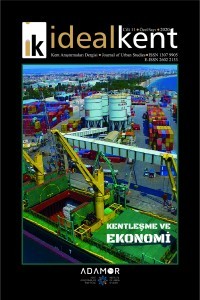
İDEALKENT
Yazarlar: Lale BERKÖZ
Konular:-
Anahtar Kelimeler:Gated housing,Housing preferences,Housing satisfaction,Housing and environment quality,İstanbul
Özet: Gated communities are becoming increasingly popular in İstanbul. This transformation began in the 1990’s when the high-income groups, who had accumulated wealth in the aftermath of the 1980’s, chose to escape from the dense life of the city centre, leaving the heterogeneous residential areas behind. Instead, they showed a tendency to settle in isolated residential areas. The rise of Gcs has gained significance due to the demand for the northern and northeastern districts of the city since the 1999 earthquake in the Marmara Region. In this article, the arithmetic mean and the standard deviation values have been analysed based on the answers related to the accessibility to function areas and the satisfaction in the various facilities in the housing environment, which affect the overall satisfaction in housing and housing environment.
Dergi editörleri editör girişini kullanarak sisteme giriş yapabilirler. Editör girişi için tıklayınız.